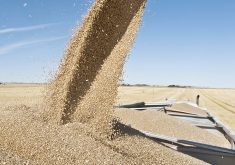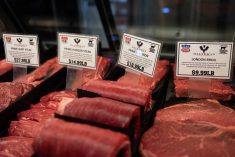Federal researchers think they’ve found a tool that can help ensure food is free from harmful bacteria like E. coli 0157.
After a decade of work and three prototypes, scientists in Agriculture Canada’s food research program in Guelph, Ont., have built a machine that tests for the presence of bacteria in food, soil or water, and quickly counts the number of cells.
The rotary thermocycler can also help researchers learn more about the “friendly bacteria” that keep people and animals from getting sick, said Roger Wheatcroft, a molecular biologist and lead researcher on the project.
Read Also

Soybean market still figuring out implications of China-U.S. pact
Soybean futures had a muted reaction to the U.S. trade deal with China as the market tries to figure out the nuances of the deal.
Wheatcroft said the fourth prototype looks promising, so the department has obtained a Canadian patent and applied for an international patent.
He recognized the need for a quick way to count bacteria from his work studying bacteria in the intestine that helps aid digestion, fight pathogens and prevent disease.
For example, his team looks at how a group of bacteria called bifidobacteria protect chickens from the salmonella that can make humans ill when eating undercooked meat.
Understanding these sorts of friendly bacteria will be important in work to develop alternatives to antibiotics, he explained.
“You kill off, when you use antibiotics, many of the good bacteria as well as the pathogens,” he said.
To learn more about friendly bacteria, researchers need to be able to count them.
“You can’t manage anything you can’t measure.”
Current methods for counting bacteria are time-consuming and tedious, and require skilled technicians working in sterile labs.
The rotary thermocycler is faster, simpler and more automated, Wheatcroft said.
The prototype looks like a four-disc compact disc player housed inside a two-drawer filing cabinet.
A sample is placed on a CD-sized filter and inserted in the machine, which uses a polymerase chain reaction technique to detect whether the filter carries DNA of the bacteria in question.
It rapidly heats and cools the filters, spraying them with chemicals that produce spots where the bacteria is present. An electronic camera counts the number of spots.
The rotary thermocycler can produce results within a work day, Wheatcroft said, which is an improvement in speed. Current methods require 48 hours to count E. coli bacteria.














